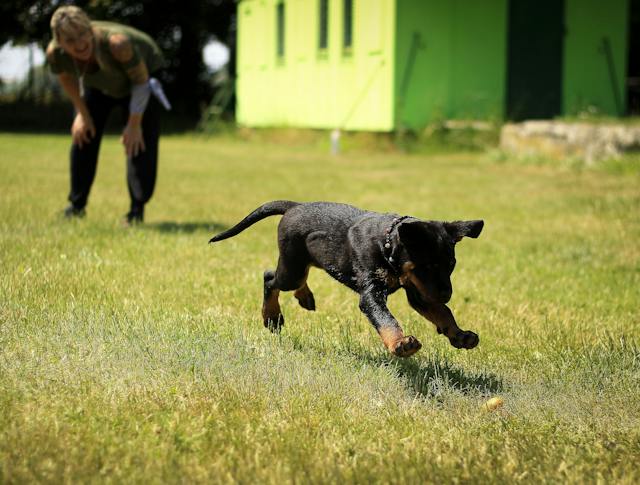Greetings from the amazing world of puppy rearing! Although adopting a new furry pet can be an exciting and fulfilling experience, there are drawbacks as well. Appropriate training is one of the most crucial elements of bringing a puppy into your house. This book will go over the fundamentals that all new dog owners should be aware of in order to prepare you and your pet for success, regardless of whether you’re a first-time owner or just need a refresher. Now that you have a treat (for your dog, of course), let’s start our exploration into puppy training!
The Value of Training Puppies
Puppy training is an essential foundation for developing a strong link and mutual understanding between you and your new companion, puppy training goes beyond simply teaching your pet to sit or retrieve. Good training facilitates the setting of limits, encourages appropriate behaviour, and improves communication. It also gives your puppy cerebral stimulation, which keeps them happy and interested.
Early on, consistent training lays the groundwork for a later, well-mannered adult canine. It imparts valuable life lessons like impulse control, socialisation, and rule respect. Training also protects your puppy’s safety by teaching them fundamental commands that may avert mishaps or hazardous circumstances.
It’s important to keep in mind that teaching your dog requires patience. Every encounter is a chance to develop the bond between you two and to reward good behaviour. Thus, set out on this adventure with zeal and dedication—the benefits will be incalculable!

Essential Commands to Instruct Your Dog
In order to provide your puppy with a solid basis for training, it is imperative that you teach them fundamental commands. Beginning with basic cues like “sit” and “stay,” reinforce your behaviour with rewards. For clear communication with your pet, use a firm but gentle voice.
After they’ve mastered these fundamentals, give them commands like “down” and “come.” Regular practice in various settings will aid in your puppy’s ability to generalise the behaviours. Keep in mind that every dog learns at their own rate, so patience is essential when teaching them new commands.
Remember how important it is to teach leash manners by using instructions like “leave it” and “heel.” These will keep your puppy secure in potentially harmful situations in addition to making walks more fun.
Early attention to these foundational commands will put your puppy up for success in their training process. Remain steady and upbeat, and observe your dog grow into a well-mannered friend!
Breaking Your Puppy’s House
The housebreaking of your puppy is a crucial training component that calls for persistence and patience. To begin teaching your puppy when it’s time to go outdoors, set up a schedule for meals, playing, and potty breaks.
To determine when your puppy needs to go potty, pay careful attention to their actions and body language. Take them outside as much as possible, particularly after meals or naps, and give them lots of praise when they relieve themselves in the proper spot.
Be ready with cleaning solutions made especially for pet messes because accidents will arise during the housebreaking process. Reprimanding or punishing your dog for mishaps should be avoided as this may induce anxiety and perplexity.
Good behaviour can be reinforced by using strategies for positive reinforcement, such as giving sweets and verbal praise. When it comes to housebreaking, consistency is essential. Follow your puppy’s routine and exercise patience as they learn where it’s OK to relieve themselves.

Resources and Instruments for Successful Puppy Training
The appropriate materials and tools can make all the difference in your puppy’s learning process when it comes to training. A good, durable collar and leash are a must for those outdoor training sessions. Additionally useful is a harness, particularly for smaller breeds of puppies that tend to pull.
Consider getting your dog some toys that will stimulate their mind in addition to some physical gear. Interactive toys or puzzle feeders can keep them occupied and help avoid behaviour problems caused by boredom. When it comes to positive reinforcement training, sweets are an additional helpful tool. Find out which treats best encourage your puppy!
Additional direction and advice on efficient training methods can be found in online resources including training videos and articles. To socialise your dog with other dogs and learn from seasoned trainers, think about signing up for a neighbourhood puppy obedience class.
Keep in mind that every puppy is different, so don’t be scared to experiment with various equipment and materials until you figure out what suits your four-legged friend the best!
Bringing a new canine buddy into your home requires puppy training. You may prepare yourself and your puppy for success by learning the fundamentals of puppy training and exercising patience and consistency in your efforts. Always remember to reward your dog with positive reinforcement, have patience with them while they learn, and get professional assistance if necessary. Through training, you may create a solid bond with your puppy with commitment and affection. Take pleasure in imparting new skills to them and witnessing their development into well-mannered friends. Let’s have a lot of j





